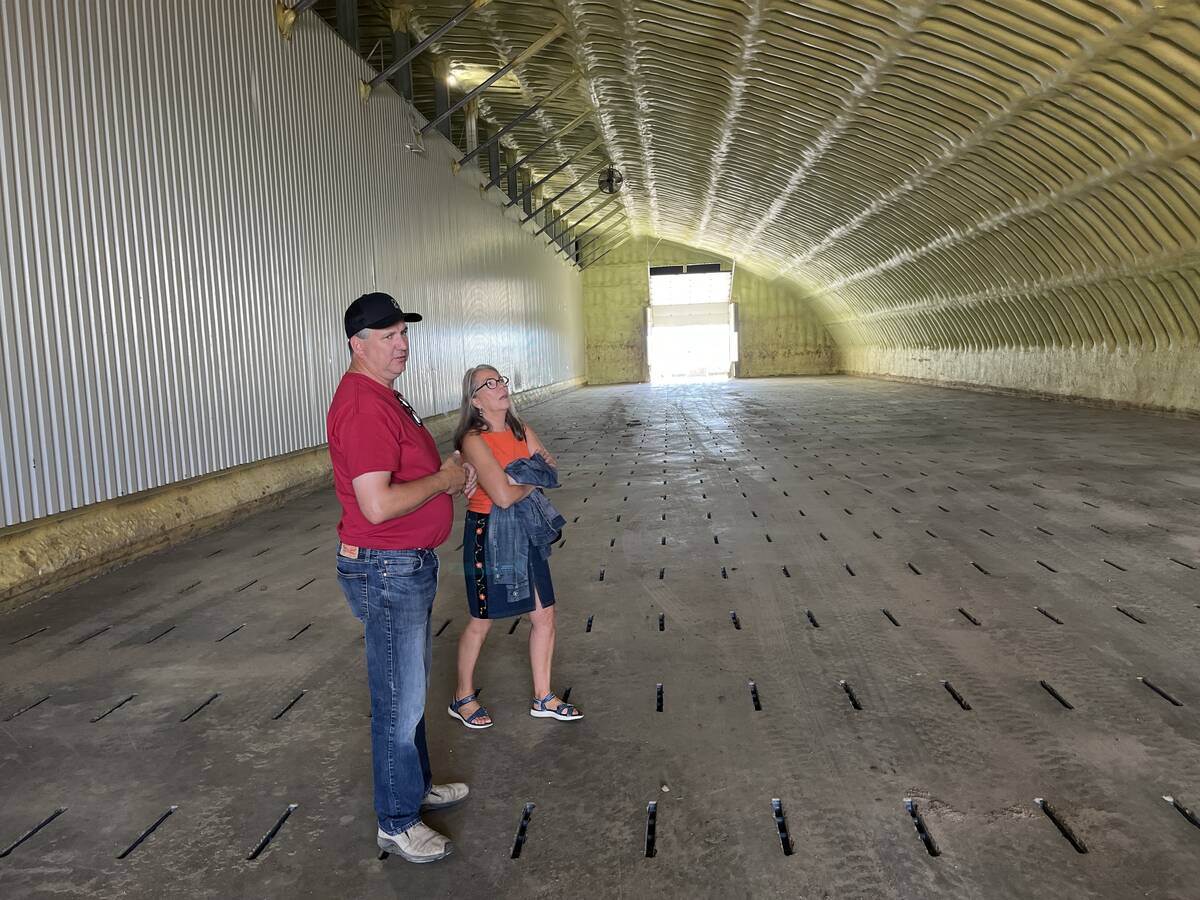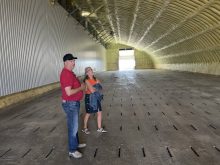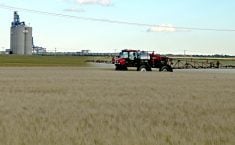Topping up cattle feed with protein may put more meat on the animals’ bones more quickly, but it won’t put more dollars in producers’ pockets.
In fact, it will have the opposite effect.
“Cattle feeders will actually make more money per animal by not feeding additional protein,” said researcher Calvin Booker of Feedlot Management Health Services, or FMHS, of Okotoks, Alta.
“There are not enough benefits in terms of feedlot performance or carcass grading to pay for the additional protein.”
The findings are the result of a two-year, $600,000 study carried out by nine researchers at three locations in Alberta.
Read Also

Potato farm requires year-round management
The most recent Open Farm Day in Alberta showcased agricultural producers across the province educating the general public about the process that is required is to get food to their table.
The study was designed to evaluate the National Research Council’s 1996 recommendation that increasing crude protein in rations by 1.5 percent on a dry matter basis will increase the performance of feedlot cattle. The NRC study did not include cost-benefit or economic analysis.
The Alberta-based research team found that increasing the crude protein content of a barley ration by 1.5 percent, in the form of urea or canola meal, did indeed produce a measurable improvement in the rate of gain.
However, the team also found that doing so added an average of more than $10 per head in feed costs, depending on the type and price of the protein.
“Our advice to feeders is there’s no advantage to feeding supplemental protein in a standard barley-based ration,” said FMHS’s Tim Guichon, who headed the research project.
The study looked at three aspects of the protein supplement issue:
- The FHMS group looked at how feeding extra protein to feeder cattle affected feedlot performance, carcass grading and overall cost of production.
- Researchers at the University of Alberta looked at the protein requirements of both mature and feeder cattle in cold temperatures.
- Scientists at Agriculture Canada’s Lethbridge Research Centre evaluated the metabolic response of feeder cattle to supplemental protein.
FHMS’s feedlot study involved 576 crossbred calves divided into four groups. A control group received a basic 11.5 to 12.5 percent barley ratio while the three other groups were fed a one to 1.5 percent supplement for three different periods: rapid growth phase; finishing and the full 195-day feeding period.
Canola meal was used in the first year of the study and urea the second. Losses dropped to $1 to $2 per head with the less expensive urea, but there was still no economic advantage.
The U of A’s cold weather study found no significant difference in the activity of rumen microbes that produce protein at temperatures of -22 C or +20. In other words, cattle were equally efficient in using protein in cold or warm weather.
The Lethbridge study found that supplemental protein increases the activity of rumen microbes that produce protein and ultimately the amino acids an animal uses for growth.
That translates into improved growth for cattle less than 900 pounds, although the effect lessens as the animal ages or approaches its finished market weight in a feedlot setting.
















